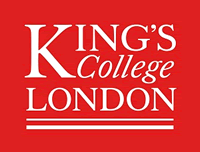About the Project
1st Supervisor - Dr Adelaide De Vecchi
2nd Supervisor - Dr Oleg Aslanidi
Stroke is a common complication of atrial fibrillation (AF), which itself is the most widespread cardiac arrhythmia. However, the assessment of stroke risk is not straightforward in a large population of AF patients who are presented in sinus rhythm (SR), including patients after catheter ablation (CA) therapy, i.e. “healthy” patients. The aim of the proposed project is to develop a novel image-based computational workflow for predicting stroke risk in this challenging population.
The project will develop and validate personalised models of the thermal-fluid dynamics in the left atrium during CA, including mechanisms of blood stasis, thrombus formation and its location tracking in the blood stream. The models will be applied to three cohorts (healthy volunteers in SR, pre-CA patients in AF, post-CA patients in SR) to predict stroke risk. Our personalised modelling approach will allow for significantly improved stroke risk assessment and anti-coagulation therapy prescription for patients undergoing CA therapy.
During atrial fibrillation (AF), the atrium wall stops contracting in a synchronous rhythm and starts quivering. This behaviour is triggered by abnormal electrical impulses at arrhythmogenic driver site. As a result, the motion of the blood flow in the atrium is weakened, making it prone to blood stasis. This abnormal flow behaviour promotes blood clot formation and thromboembolism in anatomical regions where blood velocities are substantially lowered, e.g. the left atrial (LA) appendage. These thromboemboli can be carried by the blood flow to other organs, such as the brain, with subsequent risk of stroke. Catheter ablation (CA) consists in burning the driver site in the atrial wall by applying heat via a catheter, in order to suppress the abnormal electrical impulses and restore normal contraction, i.e. sinus rhythm (SR). However, delivering heat to the wall results in both higher blood temperatures, which further increase the risk of clot formation, and altered mechanical properties of the injured wall. Further, the strong dependence on patient-specific factors that are difficult to quantify with imaging data alone, e.g. blood temperature and residence times, makes stroke risk prediction post-CA very challenging – especially as the patients stay in SR and appear arrhythmia-free. In this context, personalised image-based modelling will deliver an effective tool to predict this potentially fatal complication in a challenging patient population.
The project will consist of two phases. In the first part, finite-element models of the LA motion through the cardiac cycle will be generated from Magnetic Resonance Imaging data using our previously validated methodology. A new tool for particle tracking via continuous seeding of particles in the blood flow will be implemented into our validated software package (CHeart) to monitor the trajectory of each particle and its temperature during the cardiac cycle. A chemical kinetics model of the blood coagulation process will also be added to the workflow. These enhanced models will allow for simulation of the coagulation dynamics to investigate the thrombogenicity of blood after CA, and its dependence on catheter temperature and blood properties. The thromboemboli will also be tracked in the blood stream and the time to ejection into the left ventricle calculated.
In the second phase, these tools will be used to simulate blood flow dynamics via personalised thermal-fluid LA models in 30 cases, divided into three cohorts ¬– healthy volunteers in SR (control group), post-CA patients in SR (SR patient group), and pre-CA patients in AF (AF patient group). First, the effect of a change in the contraction rhythm alone on the blood dynamics will analysed by comparing flow between AF patients and the control group. Second, the changes in flow dynamics, including areas of stasis and coagulation, between SR patients and the control group will be investigated to understand consequences of the heat-induced atrial injury alone, and the associated thromboembolic risk. The outcome of these two studies will be used to develop a novel patient-specific risk score for stroke.

 Continue with Facebook
Continue with Facebook

